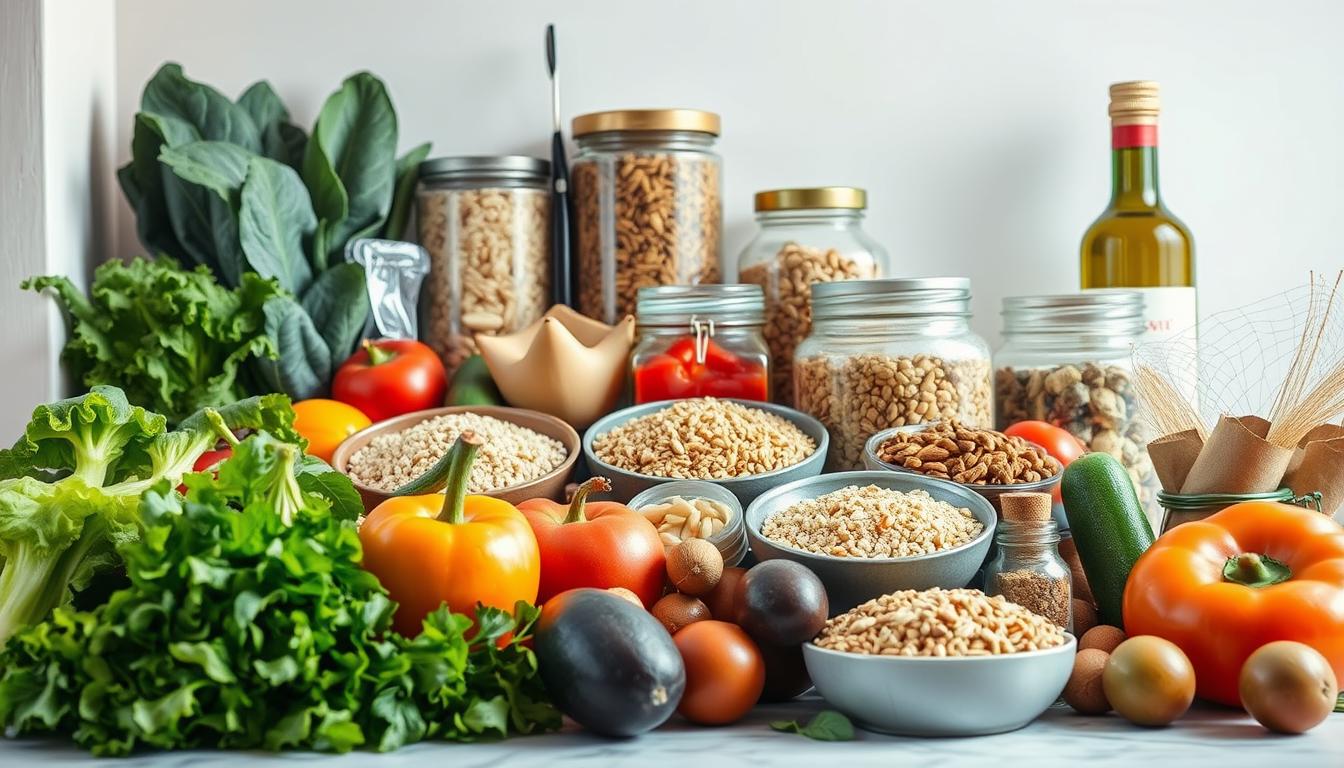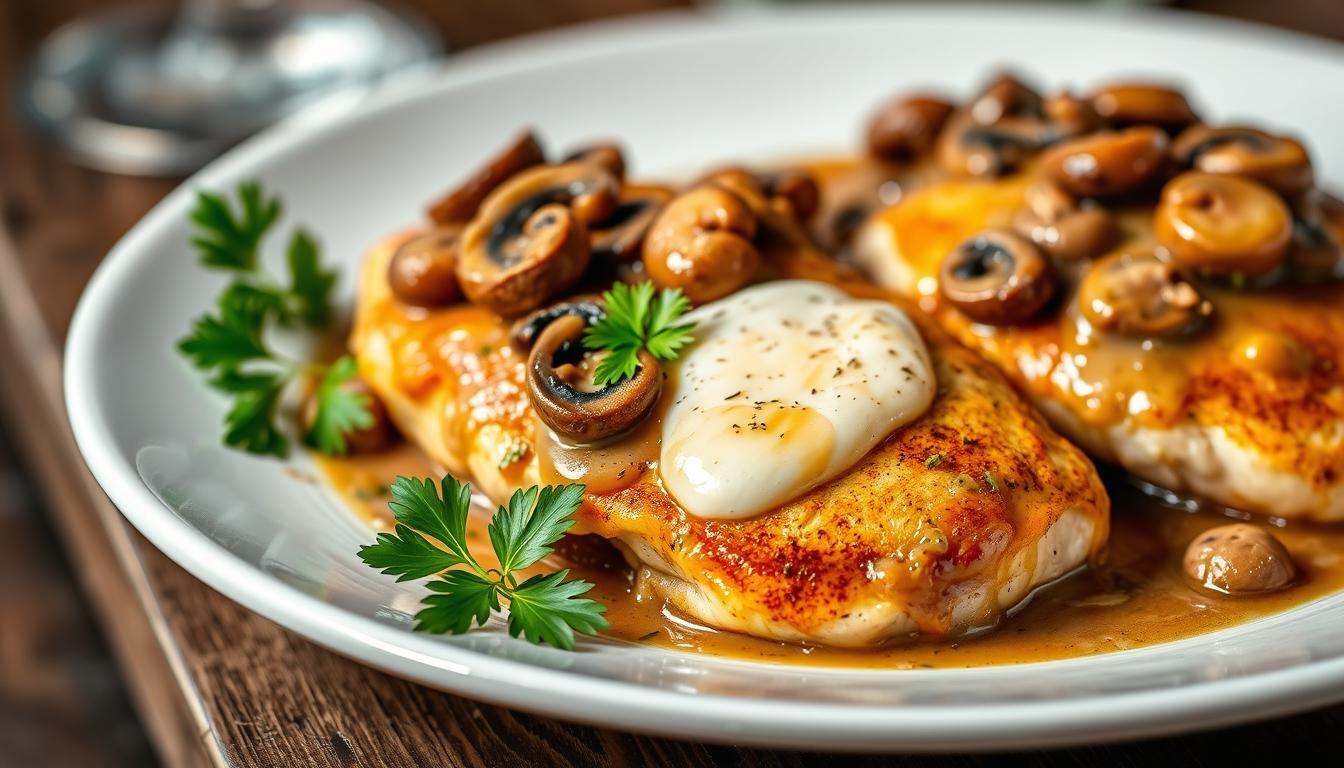10 Staple Foods to Make Healthy Eating Easy All Week Long
Eating well doesn’t require complicated systems or hours in the kitchen. Nutrition experts agree that strategic ingredient selection forms the backbone of nourishing meals. When your shelves contain versatile, nutrient-rich items, you can create satisfying dishes faster than scrolling through delivery apps.
Many people struggle with elaborate meal prep methods that demand perfect planning. Color-coded charts and Pinterest-worthy organization often fall apart when life gets busy. The solution lies in curating foundational ingredients that work across multiple recipes and require minimal preparation.
A well-stocked kitchen acts like a culinary toolkit. Canned beans become tacos one night and soup the next. Frozen vegetables transform into stir-fries or grain bowls. These flexible items let you assemble balanced plates without last-minute grocery runs.
Key Takeaways
- Simplify meal creation with core ingredients that serve multiple purposes
- Reduce decision fatigue through strategic pantry organization
- Maintain nutritional quality without rigid planning schedules
- Save time by using freezer-friendly components
- Adapt recipes based on available staples during busy weeks
This approach makes wholesome eating achievable for households with packed schedules. You’ll discover how combining basic refrigerator items with shelf-stable goods creates endless meal combinations. Let’s explore the essential components that keep kitchens ready for quick, nourishing meals any day of the week.
How Stocking Your Kitchen Simplifies Healthy Meal Planning
Streamlining your kitchen setup transforms meal prep from a chore into a seamless process. With core ingredients at your fingertips, you can pivot between recipes faster than reheating takeout. Three zones matter most: your dry storage, cold storage, and frozen reserves.
Pantry, Fridge, and Freezer Must-Haves
Build your culinary toolkit with these essentials:
| Category | Essential Items | Usage Tips |
|---|---|---|
| Pantry | Black beans, quinoa, olive oil | Combine with fresh veggies for bowls |
| Fridge | Greek yogurt, eggs, leafy greens | Use within 5 days for peak freshness |
| Freezer | Edamame, berry mixes, salmon fillets | Thaw overnight for quick cooking |
Tips for Quick and Nutritious Meal Assembly
Pair frozen spinach with canned tomatoes and garlic for a 10-minute pasta sauce. Keep dressings simple: whisk oil, vinegar, and herbs. “Always check labels for hidden sugars in frozen fruits,” advises nutritionist Laura Chen.
Store grains in clear containers for visibility. Group similar items together – keep all canned proteins on one shelf. This system lets you grab what you need without rummaging.
“Your freezer is your best ally on hectic days. Frozen veggies retain more nutrients than week-old produce.”
Essentials: Staple Foods to Make Healthy Eating Easy All Week Long

Building a kitchen stocked with versatile ingredients cuts decision time while boosting nutrition. Nutritionists recommend 15 foundational items that work across cuisines and meal times. These picks deliver essential vitamins, proteins, and fiber without complicated prep.
Smart selections balance fresh and shelf-stable options. Canned chickpeas become hummus spreads or salad toppers. Frozen spinach blends into smoothies or sautés in minutes. Each item serves multiple roles from breakfast to dinner.
| Food | Key Nutrients | Meal Ideas |
|---|---|---|
| Red lentils | Protein, iron | Soups, veggie burgers |
| Sweet potatoes | Vitamin A, fiber | Roasted wedges, mash |
| Extra-firm tofu | Plant protein | Stir-fries, scrambles |
These items stay fresh for days or weeks. Apples and onions last nearly a month when stored properly. Bone broth freezes well for future soups. This strategy reduces waste and grocery trips.
“Pair quinoa with frozen veggies for a complete meal in 15 minutes. It’s cheaper than takeout and twice as nutritious.”
Cost-conscious choices like oats and lentils provide multiple servings per package. Combine them with fresh produce for balanced plates. This approach works for gluten-free, vegetarian, and budget-focused diets alike.
Protein-Packed Choices: Chicken, Tofu, and Salmon

Protein forms the cornerstone of satisfying meals, offering both nutrition and culinary flexibility. These three options deliver essential nutrients while adapting to countless flavor profiles. Their versatility makes them ideal for busy schedules and diverse dietary needs.
Nutritional Powerhouses
Chicken breast leads as America’s most accessible protein, with 27 grams per 3-ounce serving. It absorbs spices beautifully for tacos or curries. Salmon provides omega-3s that support heart health and cognitive function. A 3-ounce portion contains 17 grams of protein plus vitamin D.
Extra-firm tofu surprises with 17 grams of plant protein per serving. Its calcium content rivals dairy, making it ideal for bone health. “Smoked salmon adds elegance to breakfasts while delivering anti-inflammatory benefits,” notes chef Marcus Wells.
Smart Prep & Storage
- Freeze raw chicken for 9 months or cooked portions for 3 months
- Press tofu 15 minutes before cooking for better texture
- Vacuum-seal salmon portions to prevent freezer burn
Marinate proteins in reusable containers for faster cooking. Batch-cook chicken for leftovers that become salads or wraps.
Daily Meal Integration
| Protein | Breakfast | Dinner |
|---|---|---|
| Chicken | Scrambled wraps | Lemon-herb sheet pan |
| Salmon | Smoked bagels | Teriyaki bowls |
| Tofu | Smoothie boosts | Stir-fries |
Transform last night’s salmon into morning hash. Crumble tofu into oatmeal for added protein. These strategies keep meals exciting without extra effort.
Wholesome Grains and Legumes for Balanced Meals

Nutrient-dense grains and legumes form the foundation of countless nourishing meals. These kitchen staples deliver sustained energy while simplifying meal assembly. Their versatility shines across breakfast scrambles, lunch bowls, and dinner plates.
Power Trio for Nutrient-Packed Dishes
Red lentils transform soups and stews with their 25-minute cook time. Combine them with tomatoes and cumin for a hearty daal. Their mild sweetness pairs perfectly with turmeric and garlic.
Whole wheat spaghetti offers more fiber than regular pasta. Its sturdy texture holds up to chunky sauces and roasted vegetables. Try it with white beans and olive oil for a Mediterranean twist.
| Ingredient | Key Benefit | Meal Idea |
|---|---|---|
| Quinoa | Complete protein | Breakfast porridge |
| Red Lentils | Iron boost | Spiced curry |
| Whole Wheat Spaghetti | Digestive fiber | Pesto pasta salad |
Quinoa’s 2:1 cooking ratio makes prep foolproof. Rinse it first to remove bitterness. “One cup uncooked yields three servings – perfect for meal prep,” notes dietitian Emily Torres.
Store cooked grains in airtight containers for up to five days. Mix quinoa with roasted veggies for instant grain bowls. Leftover spaghetti becomes tomorrow’s cold salad with chickpeas.
“Pair lentils with brown rice for a complete protein source. It’s cheaper than meat and just as satisfying.”
Breakfast Staples That Fuel Your Day

Morning meals set the nutritional tone for your entire day. Quick-cooking oats emerge as a morning superhero, transforming into creamy porridge in 90 seconds. Their neutral flavor welcomes sweet and savory toppings alike, making them ideal for rushed schedules.
Quick-Cooking Oats and Fresh Add-Ins
Microwave oats with milk or water for instant warmth. Boost nutrition with:
- Sliced banana for potassium
- Almond butter for healthy fats
- Chia seeds for omega-3s
Research shows oats’ beta-glucan fiber helps maintain steady blood sugar levels. A Harvard study found daily oat consumption reduces heart disease risk by 10%.
Recipe Ideas for a Nutritious Morning
Try these fast combinations:
- Wholegrain bread with smashed avocado and egg
- Overnight oats with milk, blueberries, and walnuts
- Greek yogurt parfait with granola and banana
Frozen berries work when fresh fruit runs low. Prep mason jar oats the night before for grab-and-go convenience. “Always keep peeled bananas in the freezer for smoothie emergencies,” suggests meal prep expert Sarah Klein.
Versatile Ingredients for Heart-Healthy Soups and Stews
Nourishing soups transform basic ingredients into comforting meals that support overall wellness. At their core lies bone broth – a liquid powerhouse that elevates both flavor and nutrition. This golden base contains collagen and amino acids shown to support joint function and gut health.
Leveraging Liquid Gold in Your Kitchen
Swap water with broth when cooking grains for richer flavors. A cup enhances quinoa or rice within minutes. Research suggests its glucosamine content may improve sleep quality and brain function over time.
Store leftover broth in ice cube trays for single-serving portions. Toss frozen cubes into sauces or simmer with chopped carrots and parsnips. “Bone broth forms the foundation of three weekly meals in my house,” shares chef Amanda Rhee.
Combine hearty vegetables like beans and kale with this versatile liquid. Simmer 20 minutes for a satisfying vegetable soup. Add ginger for immune support or turmeric for anti-inflammatory benefits. These combinations deliver health advantages without complicated recipes.
This approach turns simple components into meals that nourish body and soul. Your freezer becomes a treasure chest of ready-to-use broth, ensuring wholesome options even on hectic days.



